Content for TR 22.861 Word version: 14.1.0
5.2 Connectivity aspects p. 11
5.2.1 Description p. 11
As described in the Smart Wearables and Bio-connectivity related use cases in [2], the Internet of Things will support various connectivity models. The devices can connect with the network directly or connect with the network using another device as a relay UE, or they may be capable of using both types of connections. The devices can range from simple wearables, such as a smart watch or a set of sensors embedded in clothing, to a more sophisticated wearable device monitoring biometrics. They can also be non-wearable devices that communicate in a Personal Area Network such as a set of home appliances (e.g., smart thermostat and entry key), or the electronic devices in an office setting (e.g., smart printers), or a smart flower pot that can be remotely activated to provide water to the plant. The relay UE can access the network using 3GPP or non-3GPP access networks (e.g., WLAN, fixed broadband access). Essentially, one or more of the following connection models will apply for any device. Figure 5.2-1 illustrates the connection models,
- Direct 3GPP connection (e.g., a sensor that communicates with an application server or with another device through 3GPP network)
- Indirect 3GPP connection (e.g., a smart wearable that communicates through a smart phone to the 3GPP network)
- Direct device connection (e.g., a bio metric device that communicates directly with other biometric devices or with a smart phone associated with the same patient).
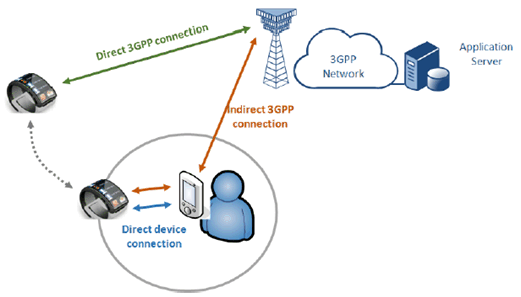
Various combinations of these connectivity scenarios will also need to be supported, including the following.
- Devices that can switch between a direct 3GPP connection and an indirect 3GPP connection
- Devices that can switch between indirect connection using 3GPP RAT and indirect 3GPP connection using non-3GPP RAT
- Devices that only support a direct device connection (e.g., does not support 3GPP connection)
- Groups of devices that communicate among themselves using a direct device connection, and also through an indirect 3GPP connection to the network through one of the devices (e.g., personal area network, home office network)
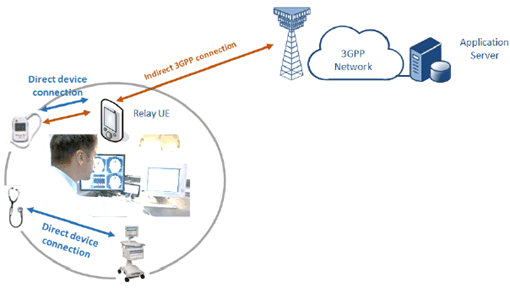
Figure 5.2-2: Connectivity modes for devices using the direct device connection and the indirect 3GPP connection
(⇒ copy of original 3GPP image)
(⇒ copy of original 3GPP image)
Some additional scenarios might apply when a Personal Area Network of devices (e.g., a person wearing several smart wearables) is in indirect 3GPP connection mode:
- A relayed device (e.g., smart watch) and relay UE can belong to the same subscriber or different subscribers of the same PLMN.
- A relayed device (e.g., smart watch) and relay UE can have subscriptions associated with different PLMNs. This is a roaming case.
- Providing secure communications between the devices using direct device connection and direct or indirect 3GPP connection,
- Taking into consideration QoS when choosing connection mode and RAT,
- Supporting the desired end user services, including real-time voice and data,
- Minimizing power consumption on devices,
- Supporting roaming access to the network, whether the relayed device or a relay UE is roaming,
- Supporting multiple relayed devices behind a relay UE,
- Providing service continuity for devices that switch between an indirect 3GPP connection and a direct 3GPP connection,
- Providing service continuity for devices that switch from one indirect 3GPP connection to another indirect 3GPP connection,
- Ensuring devices using a direct device connection, or using a relay UE for an indirect 3GPP connection, are authorized to do so,
- Providing flexibility in the choice of RAT (e.g., 3GPP RATs, non-3GPP RATs) used by the devices.
- Some requirements will be specific to devices connecting to the 3GPP system through a 3GPP-RAT
- Some requirements will be specific to devices connecting to the 3GPP system through a non-3GPP RAT
- Some general requirements will apply regardless of the RAT used for the direct device connection or the 3GPP connection.
5.2.2 Traffic scenarios p. 14
5.2.2.1 Overview p. 14
In this section, we propose the traffic scenarios for the Connectivity Aspects family. According to the description, there are several types of connectivity aspects, including devices in a direct 3GPP connection mode, devices in an indirect 3GPP connection mode and devices in a direct device connection mode. According to these types of connectivity aspects, there are several traffic scenarios. The traffic scenarios below use one device to access the relay UE as an example. Actually, the relay UE can support more than one device to access and relay their traffic to the network. In all cases of an indirect 3GPP connection, the device may communicate with the relay UE using either a 3GPP or a non-3GPP RAT. In all cases of a direct device connection, the devices may communication with each other using either a 3GPP or a non-3GPP RAT.
5.2.2.2 Traffic scenario 1 of a device in direct 3GPP connection mode p. 14
The traffic scenario below is a device in a direct 3GPP connection mode. It covers both cases, when the device is accessing its home network, and when the device is roaming.
- The device is accessing its home network, PLMN1.
- The device is accessing a visited network, PLMN2. The PLMN1 and PLMN2 have a roaming agreement.
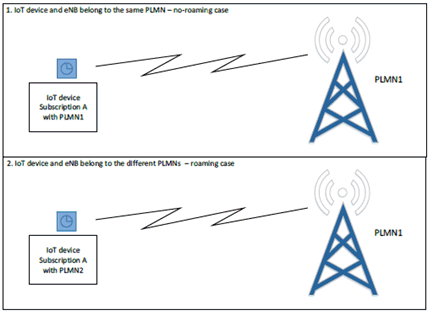
Figure 5.2-3: Traffic scenario 1 of a device in direct 3GPP connection mode
(⇒ copy of original 3GPP image)
(⇒ copy of original 3GPP image)
5.2.2.3 Traffic scenario 2 of a device in indirect 3GPP connection mode p. 15
In this scenario, the device and the relay UE belong to the same PLMN and have the same or different subscriptions. The detail scenario is as follows:
- The device has subscription A with PLMN1. The relay UE has the same subscription A with PLMN1. The relay UE is accessing its home network, PLMN1.
- The device has subscription A with PLMN1. The relay UE has the subscription B with PLMN1. The relay UE is accessing its home network, PLMN1.
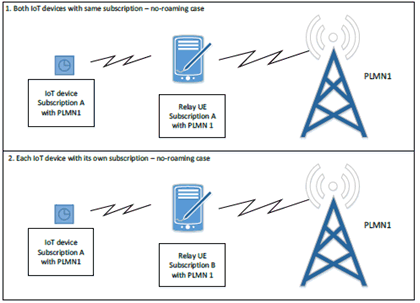
Figure 5.2-4: Traffic scenario 2 of a device which is connected with network via a relay UE
(⇒ copy of original 3GPP image)
(⇒ copy of original 3GPP image)
5.2.2.4 Traffic scenario 3 of a device in indirect 3GPP connection mode in the roaming case p. 16
In this scenario, the device and/or the relay UE is accessing a visited network and have 2 cases. One is when the device is accessing a visited network, and the other is when the relay UE is accessing a visited network. The detail scenario is as follows:
- The device has subscription A with PLMN1. The relay UE has the subscription B with PLMN2. The relay UE is accessing a visited network, PLMN1.
- The device has subscription A with PLMN2. The relay UE has the subscription B with PLMN1. The device is accessing a visited network, PLMN1, via the relay UE.
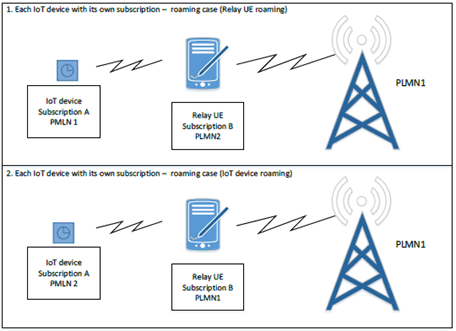
Figure 5.2-5: Traffic scenario 3 of a device in indirect 3GPP connection mode in the roaming case
(⇒ copy of original 3GPP image)
(⇒ copy of original 3GPP image)
5.2.2.5 Traffic scenario 4 of devices communication with each other in direct device connection mode p. 17
In this scenario, each device has the same or its own subscription. The detail scenario is as follows:
- Device 1, device 2 and device 3 have the same subscription A.
- The device 1 has subscription A. The device 2 has subscription B. The device 3 has subscription C.
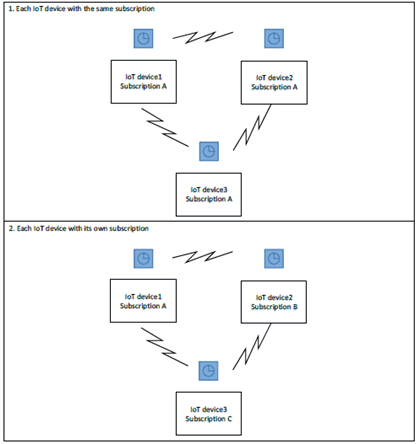
Figure 5.2-6: Traffic scenario 4 of devices communication in direct device connection mode
(⇒ copy of original 3GPP image)
(⇒ copy of original 3GPP image)
5.2.2.6 Traffic scenario 5 of service continuity p. 18
For a device which supports direct 3GPP connection, indirect 3GPP connection, or both the 3GPP system needs to support the service continuity when:
- the device changes from a direct 3GPP connection to an indirect 3GPP connection mode,
- the device changes from an indirect 3GPP connection to a direct 3GPP connection, and
- the device changes from one relay UE to another in indirect 3GPP connection mode.
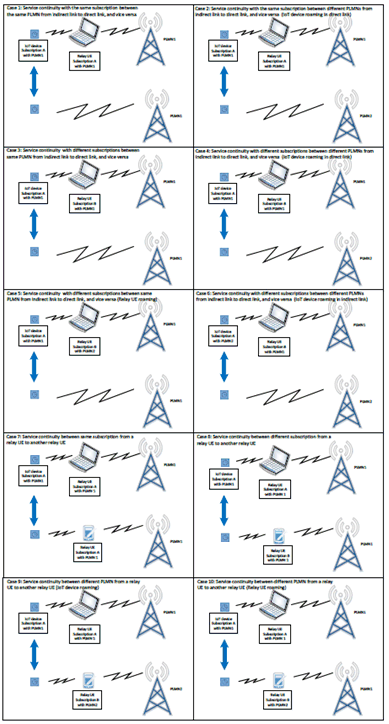
5.2.3 Potential requirements p. 20
5.2.3.1 General requirements p. 20
Requirements below are for all kinds of connectivity aspects, including devices which support both direct and indirect 3GPP connection mode and devices which support only indirect 3GPP connection mode. 3GPP RAT or non-3GPP RAT can be used between the devices and relay UEs, in a licensed band or an unlicensed band. 3GPP RAT or non-3GPP access networks (e.g., WLAN, fixed broadband access) can be used between the relay UEs and the 3GPP network:
[PR.5.2.3-001]
The 3GPP system shall support a device to access to the 3GPP network in direct 3GPP connection mode.
[PR.5.2.3-002]
The 3GPP system shall support a device to access to the 3GPP network indirectly via a relay UE when the device and the relay UE can communicate in direct device connection mode.
[PR.5.2.3-003]
The 3GPP system shall have the means to authorize a relay UE to provide relay functionality to other devices.
[PR.5.2.3-004]
A device shall determine the relay UE is authorized to serve as a relay before the device uses the indirect connection to the 3GPP network via the relay UE.
[PR.5.2.3-007]
The 3GPP system shall support an indirect 3GPP connection where a device and a relay UE subscribe to different PLMNs, when the PLMNs have a roaming agreement.
[PR.5.2.3-008]
A device which accesses the 3GPP network in direct 3GPP connection mode or in indirect 3GPP connection mode, shall have a 3GPP subscription.
[PR.5.2.3-009]
The 3GPP system shall support real time services (e.g., real time voice and/or real time video) for a device, whether the device is in indirect 3GPP connection mode or in direct 3GPP connection mode.
[PR.5.2.3-010]
The 3GPP system shall support non-real time services for a device, whether the device is in indirect 3GPP connection mode or in direct 3GPP connection.
[PR.5.2.3-011]
The 3GPP system shall support service continuity for a device, when the device changes relay UEs that are connected via 3GPP access to the 3GPP core network in indirect 3GPP connection.
[PR.5.2.3-012]
The 3GPP system shall support service continuity for a device, when the device changes from a direct 3GPP connection to an indirect 3GPP connection via a Relay UE that is connected via 3GPP access to the 3GPP core network, and vice versa.
[PR.5.2.3-013]
The 3GPP system shall optimize the battery consumption of a device, whether the device is in direct 3GPP connection mode or in indirect 3GPP connection mode.
[PR.5.2.3-014]
The 3GPP system shall optimize the battery consumption of a relay UE, via which a device is in indirect 3GPP connection mode.
[PR.5.2.3-015]
The 3GPP system shall identify, address and reach a device, when the device is in indirect 3GPP connection mode.
[PR.5.2.3-017]
The 3GPP system shall support a relay UE providing an indirect 3GPP connection with the network for multiple devices.
[PR.5.2.3-018]
The 3GPP system shall support selection of different connectivity aspects (e.g., direct device connection, direct/indirect 3GPP connection) to be used for a device.
[PR.5.2.3-019]
The 3GPP system shall support flexible selection of different RATs (e.g., 3GPP RATs, non-3GPP RATs) to be used for a device.
[PR.5.2.3-020]
The 3GPP system shall support a timely, efficient, reliable and secure mechanism to transmit the same information to multiple devices.
5.2.3.2 Requirements specific to use of a 3GPP RAT p. 21
[PR.5.2.3-005]
Devices shall determine they are authorized to engage in direct device communication with each other upon establishing a direct device communication using a 3GPP RAT.
[PR.5.2.3-016]
The 3GPP system shall support end to end QoS for a device, when the device is in indirect 3GPP connection mode.
5.2.3.3 Requirements specific to use of a non-3GPP RAT p. 21
[PR.5.2.3-006]
Before establishing a direct device communication using a non-3GPP RAT, devices may use 3GPP credentials to determine if they are authorized to engage in direct device communication.